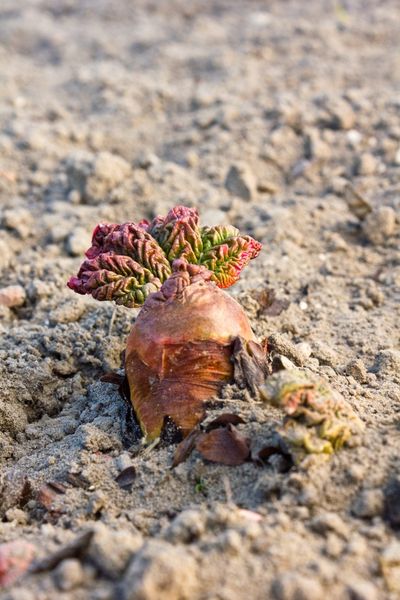What is Bare Root Rhubarb?
Bare root plants are dormant perennial plants that have been dug up, the dirt brushed off, and then wrapped in damp sphagnum moss or nestled in sawdust to keep them moist. The advantage to bare root plants is that they are usually less expensive than potted perennials and are often easier to deal with than container grown plants. Bare root rhubarb plants look like woody, dried roots and may sometimes arrive dusted with a powder to keep the root from molding.
How to Plant Bare Root Rhubarb
Most bare root plants available, such as rhubarb or asparagus, are planted during the cool dormant times of the year. Rhubarb is shipped out when it is dormant to reduce the risk of transplant shock and so it can be planted both in the fall and in the spring in most regions. Before planting your bare root rhubarb, choose a sunny location with at least six hours of full sun and remove any weeds. Rhubarb thrives in fertile, well-draining soil with a pH of between 5.5 and 7.0. If planting more than one bare root rhubarb, allow at least 3 feet (1 m.) between plantings. Dig a hole that is about a foot wide by a foot deep (30 cm. x 30 cm.). Loosen the soil at the bottom and sides of the hole so the roots can spread more easily. At this point, if you want to amend the soil a bit, now is the time to do so. Add well-rotted or dry manure and compost along with the topsoil that was removed from the hole. Back fill the hole a bit and position the bare root rhubarb plant so that the crown, opposite of the root end, is 2 to 3 inches (5-8 cm.) below the soil surface. Tamp the soil down lightly over the newly planted rhubarb to remove any air pockets and then water in thoroughly.
